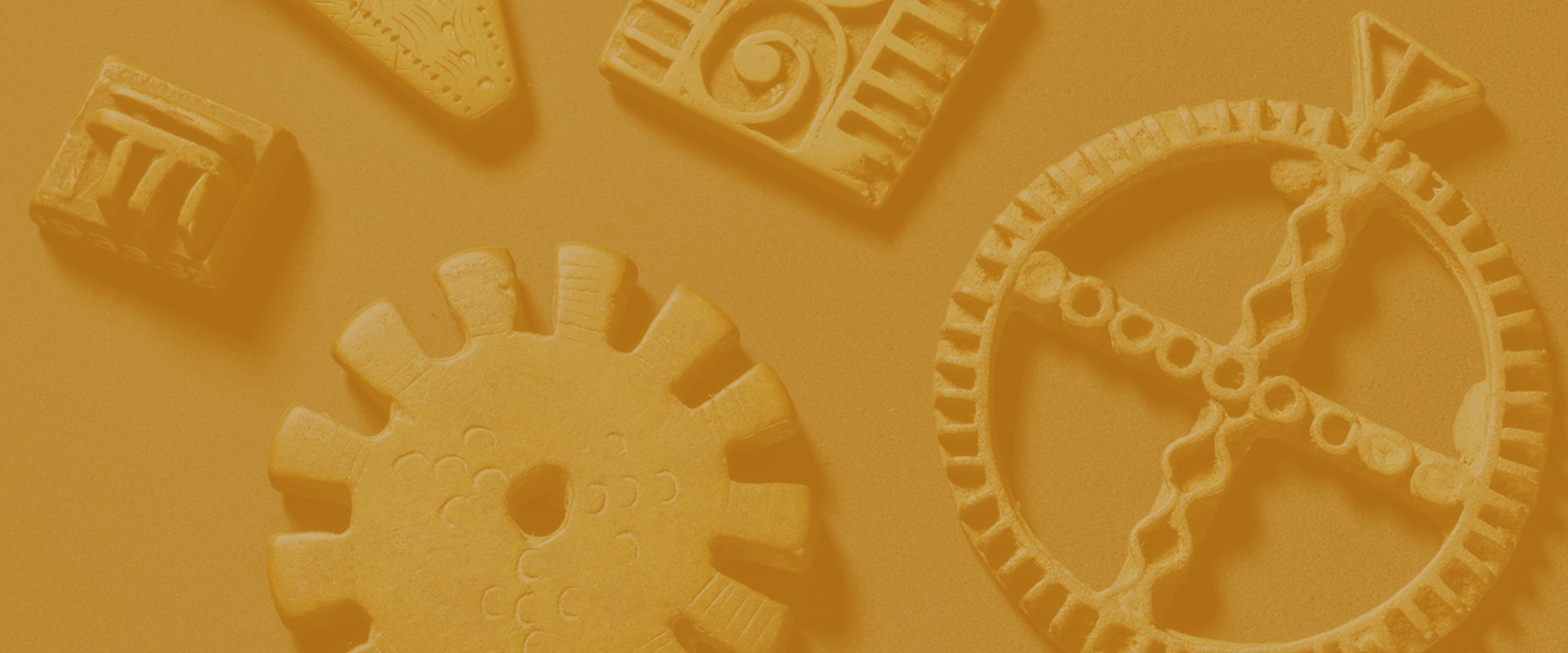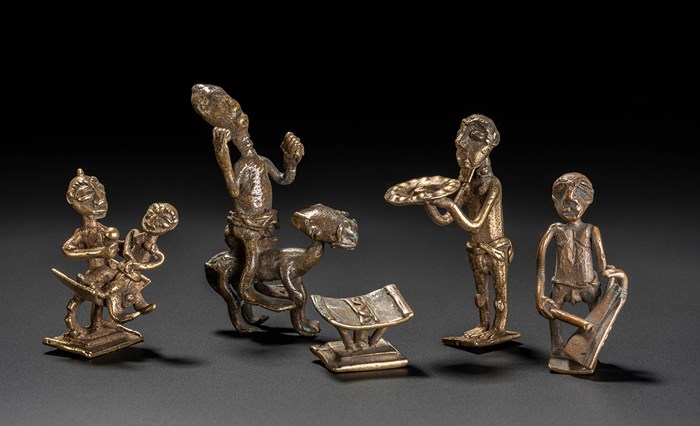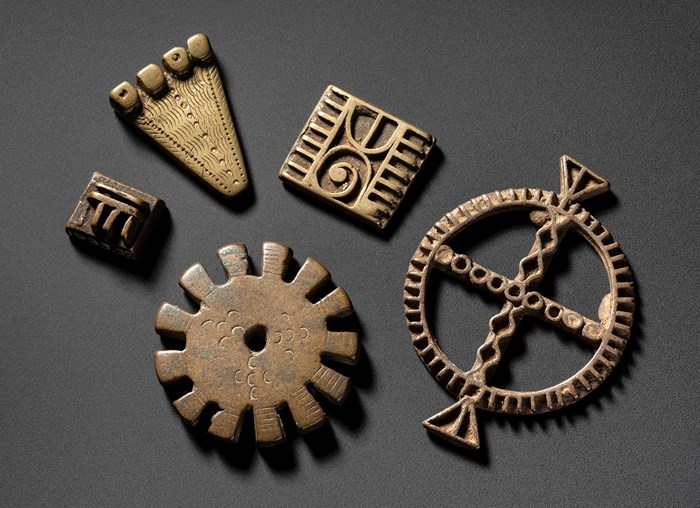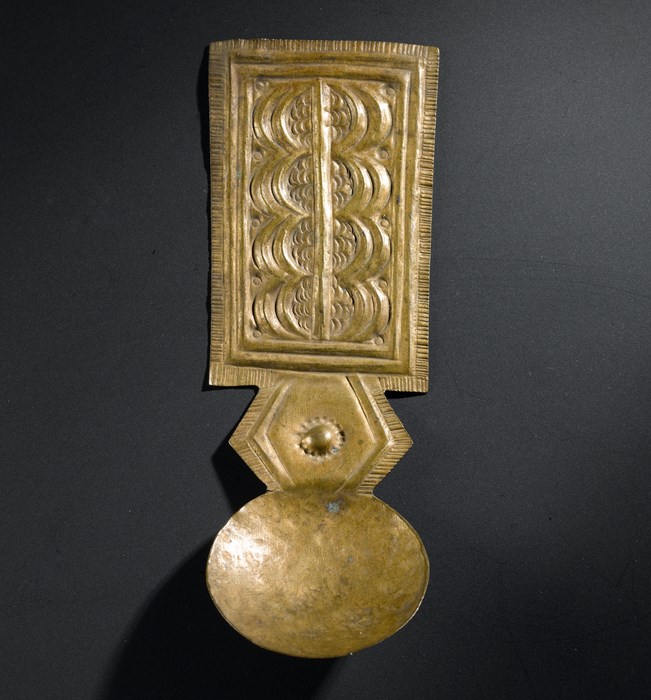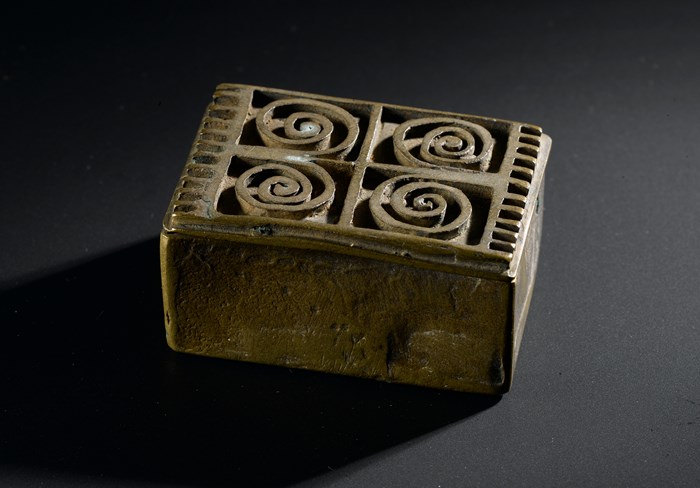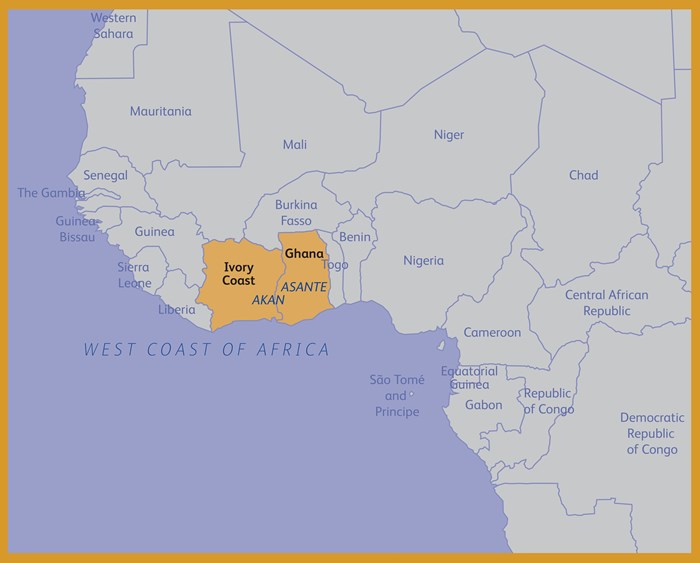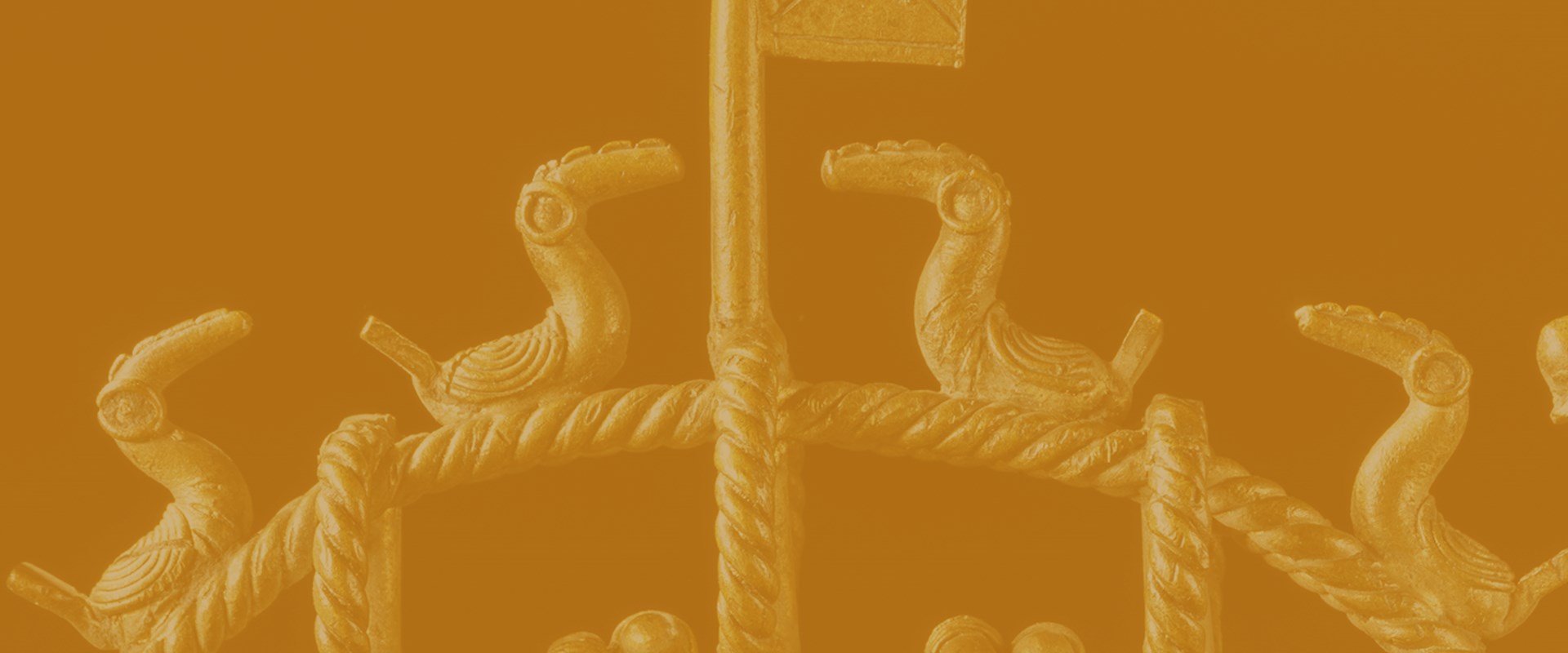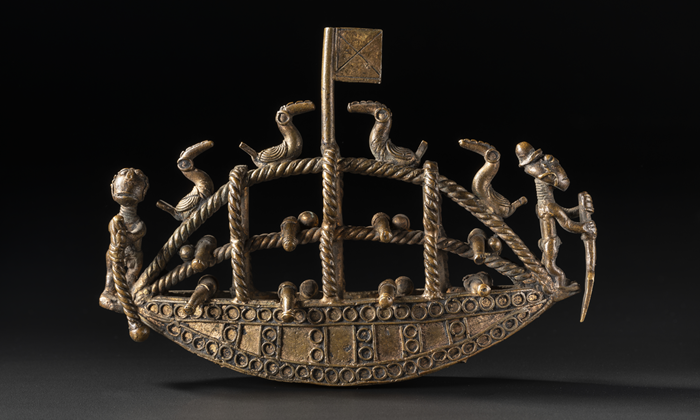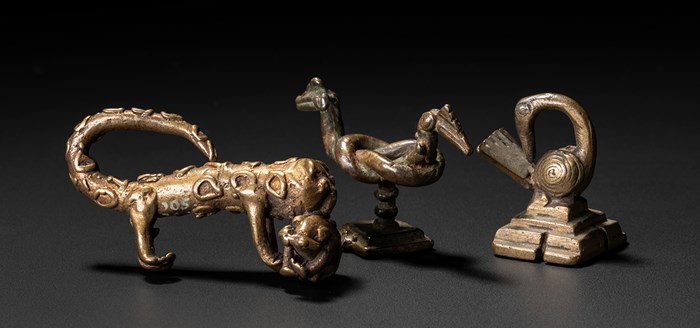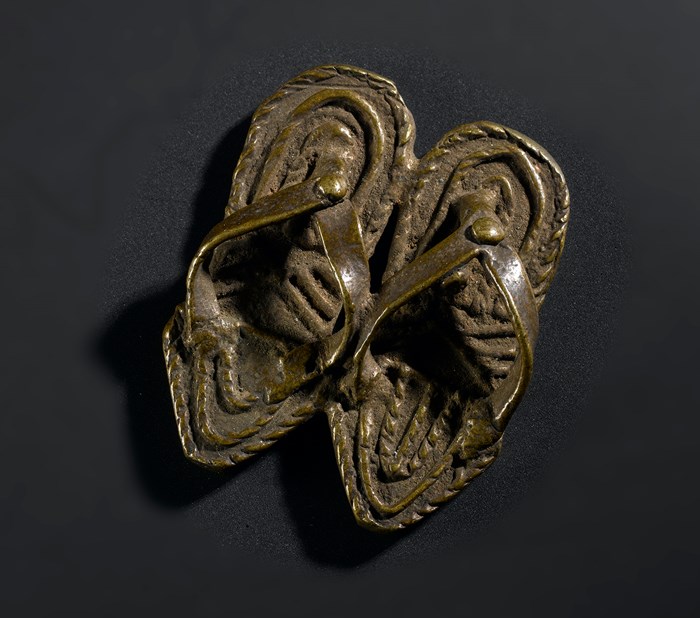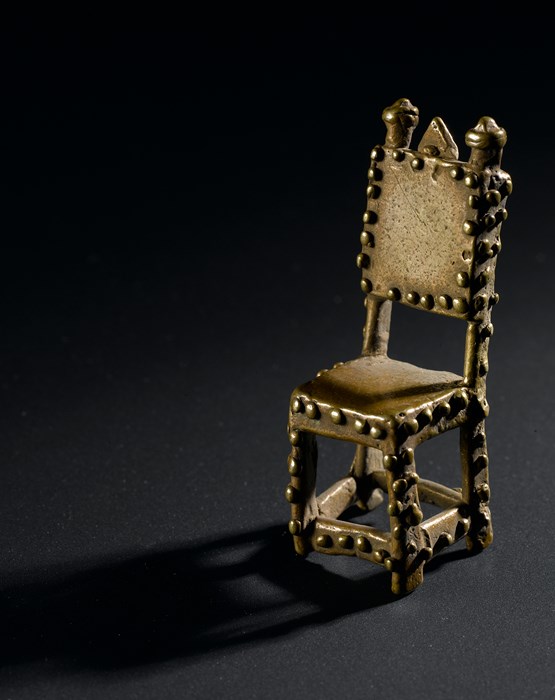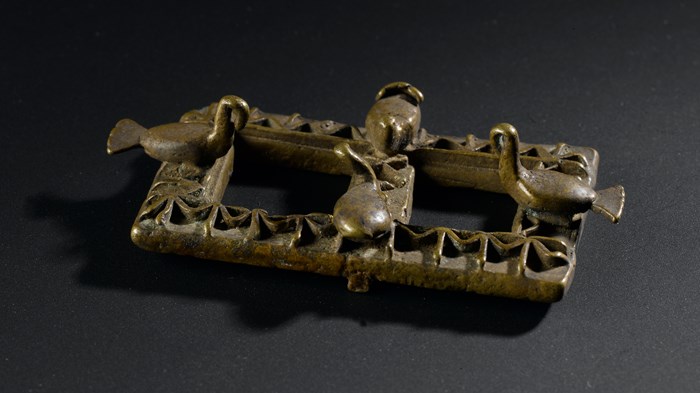Sankofa
A very common gold weight theme is the mythical Sankofa bird. The Sankofa, which is always depicted looking backwards, means ‘don’t forget your roots’ or ‘use what is behind you’. It’s still an important visual symbol in Ghana that reminds people to learn from the past.
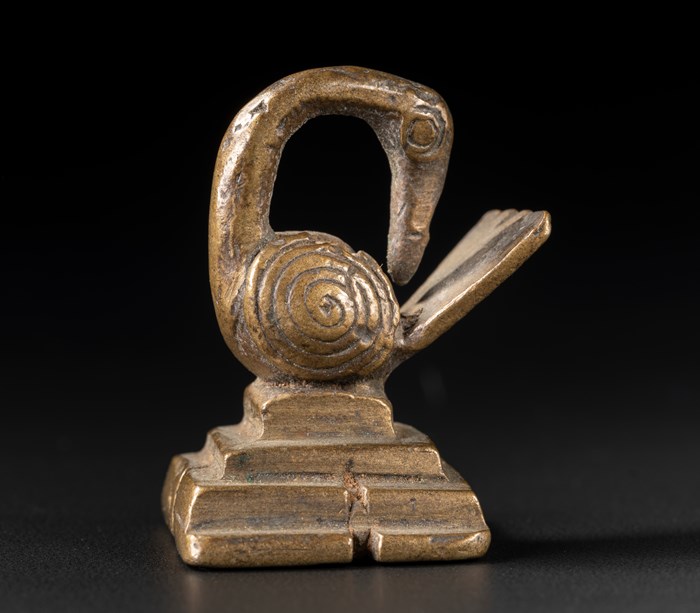
Gold weight of brass, in the form of a bird with head turned round to tail, on square stepped base: West Africa, Ghana, Asante

